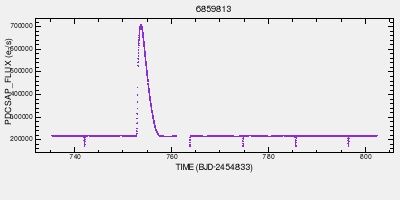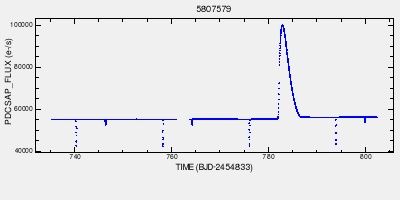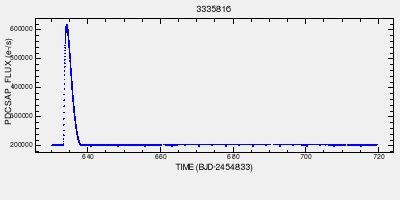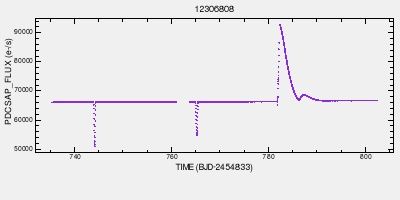A bit of a follow on to Tom's previous post about Dwarf Novae targets
here. The search for faint
background Cataclysmic Variables such as DN at the prompting of GO Director Martin Still is a very interesting tangent that has developed at PH since the project's inception. Over 200 such systems similar to the SU UMa target known
as NIK 1 (KIC 4378554) could be hiding in the Kepler FOV and thus far this effort
has been marked with some early success involving several promising candidates.
Since the recent Q7-Q9 data release, the sharp eyes of several PH users
have uncovered a host of light curves that seemed to resemble such Dwarf Nova type variables:
These looked promising at first, but
some immediate problems quickly emerged. The events were too intense, possessed no superhumps typically associated with superoutbursts and more importantly they were present only in the Pipeline corrected Kepler data (PDCSAP_FLUX), and not at all in the raw light curves found under SAP_FLUX!
Though no apparent commonality is found across FOV co-ordinates or hardware modules, (and there are several possible explanations common to the pipeline reprocessing that remain to be hashed out), one clue that may offer some explanation can be noted in the August 1st Mission Manager update by Roger Hunter:
"The new data release includes data taken in Quarter 8. This was an
operationally challenging quarter, as the spacecraft exhibited a new
behavior that resulted in a safe mode event and an extended interruption
in data collection at the beginning of the quarter. Mitigation of the
new behavior -- excess noise on the perceived sun vector -- resulted in
another science loss at the end of the quarter. Quarter 8 represents the
winter season for the spacecraft, where it is looking over the sun,
with relatively small margins against pointing errors. The mitigations
against the excess noise proved to be effective this year, when the
Quarter 12 winter season was executed without incident."
In the extreme cases, most of this growing body of 'fake DN's' do appear to be found in the Q8 dataset, which is an interesting coincidence.
When in doubt, always check the SAP_FLUX!
Resurvey of Legacy Kepler Short and Long Cadence Light Curves
Subscribe to:
Post Comments (Atom)
An Automated Search for Transiting Exocomets- HD 182952 (KIC 8027456)
A team of astronomers led by Grant M. Kennedy , discovered a potential third comet system in the Kepler prime field data of HD 182952 (KIC...

-
Earth size Exomoon orbiting a Saturn- like planet - Wikipedia If an exomoon is going to be observed in the Kepler light curves it will h...
-
There has been lots of exciting news about alien worlds recently with the announcement of confirmation studies for over 41 Kepler exo...
-
Comment by Kian Jek: "So far, Planet Hunters have found three background dwarf novae (DN) candidates in the Kepler public data, and ...





No comments:
Post a Comment
Note: Only a member of this blog may post a comment.